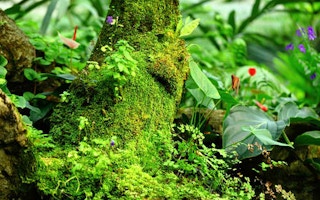DURHAM, NORTH CAROLINA – My day begins with a cup of coffee and ends with hot chocolate. In between, I consume a variety of food and medicines, including my daily 81mg dose of aspirin. A brightly colored orchid enlivens my study, and, through the window, I catch a glimpse of my green garden. In short, my life – like everyone’s – is enabled, enriched, and extended by a wide variety of plants and their derivatives.
To continue reading, subscribe to Eco‑Business.
There's something for everyone. We offer a range of subscription plans.
- Access our stories and receive our Insights Weekly newsletter with the free EB Member plan.
- Unlock unlimited access to our content and archive with EB Circle.
- Publish your content with EB Premium.
But the biodiversity on which all of us depend is under threat, as human activity devastates forests and other plant-rich habitats. The question now is how quickly are species being destroyed – and what can be done to stop it.
Designing effective conservation strategies must begin with knowledge of the species we need to protect. So far, taxonomists have described roughly 297,500 plant species. How many have they not yet described? Where are we likely to find them?
It might seem that, as the pool of undescribed species diminishes, the rate at which taxonomists describe new species should decline. But the opposite has happened, with rates often increasing nearly exponentially from year to year – a phenomenon that can be explained largely by the growing number of taxonomists. Indeed, it is only the ratio of new species to taxonomists describing them that is declining.
Based on this development, mathematical models predict that roughly 15% more plant species exist than are currently known, for a total of some 350,000 species – a figure that is consistent with expert opinion. Perhaps half of the undescribed species have already been collected and housed in herbaria, where they await detection and analysis.
“
The situation is complicated by the “Noah’s Ark” effect: while a small total area can house many species, it may not be able to ensure their long-term sustainability. In other words, even if the aggregate size of all protected areas is large, the individual areas may not be large enough to support viable populations
To find the rest, taxonomists must rely on three general patterns governing species’ geographical distribution:
- Most species have very small geographical ranges and are uncommon locally.
- The number of species found in any one habitat varies considerably. Large tracts of boreal forest across North America and Eurasia have only a handful of tree species, while the Amazon basin may house 16,000.
- Species with small geographical ranges are often concentrated in the same areas, but they tend to be in areas different from where the largest numbers of species live.
Based on these patterns, one could predict that most undescribed species have small geographical ranges and are scarce within them – that is why we have not found them yet. Moreover, they are likely to be located within known concentrations of species with small ranges, in areas like Central America, the Caribbean, the northern Andes, Brazil’s coastal forests, southern Africa, Madagascar, Southeast Asia, New Guinea, Western Australia, and many tropical islands. Given that most plants that are currently threatened with extinction – 20% of known species, and probably 30% of all species – fall within this category, efforts to preserve plant biodiversity should emphasize such concentrations of small-range species.
The fact that endangered plant species tend to be concentrated geographically raises the stakes for conservation efforts in those areas. But it could also facilitate success by enabling policymakers to focus on narrow areas instead of vast habitats.
The nearly 200-member Convention of Biological Diversity – which embodies the global consensus on the need to protect ecological diversity – aims to do just that. The CBD’s Strategic Plan for Biodiversity calls for the formal protection of at least 17% of the most ecologically important terrestrial areas, while the Global Strategy for Plant Conservation seeks to protect 60% of plant species. Given that some 67% of plant species live entirely within the selected areas, and an additional 14% live partly in these areas, this approach is highly promising.
Moreover, while some 13% of the world’s land area is currently protected, only 14% of the 17% that contains the most plant species fall within the protected areas. In order to improve the CBD’s chances of success, countries with higher concentrations of unique species need more robust protections. Given that many of these countries are in the developing world, the international community should support such efforts.
The situation is complicated by the “Noah’s Ark” effect: while a small total area can house many species, it may not be able to ensure their long-term sustainability. In other words, even if the aggregate size of all protected areas is large, the individual areas may not be large enough to support viable populations.
The ecological questions involved – how much area countries should protect, and where – are not easy to answer; doing so requires ever-deeper knowledge of plant species and their habitats. And translating those answers into action demands something that may be even more difficult to secure: strong and sustained political will.
Stuart Pimm is Professor of Conservation Ecology at the Nicholas School of the Environment and Earth Sciences, Duke University. This post originally appeared here.










